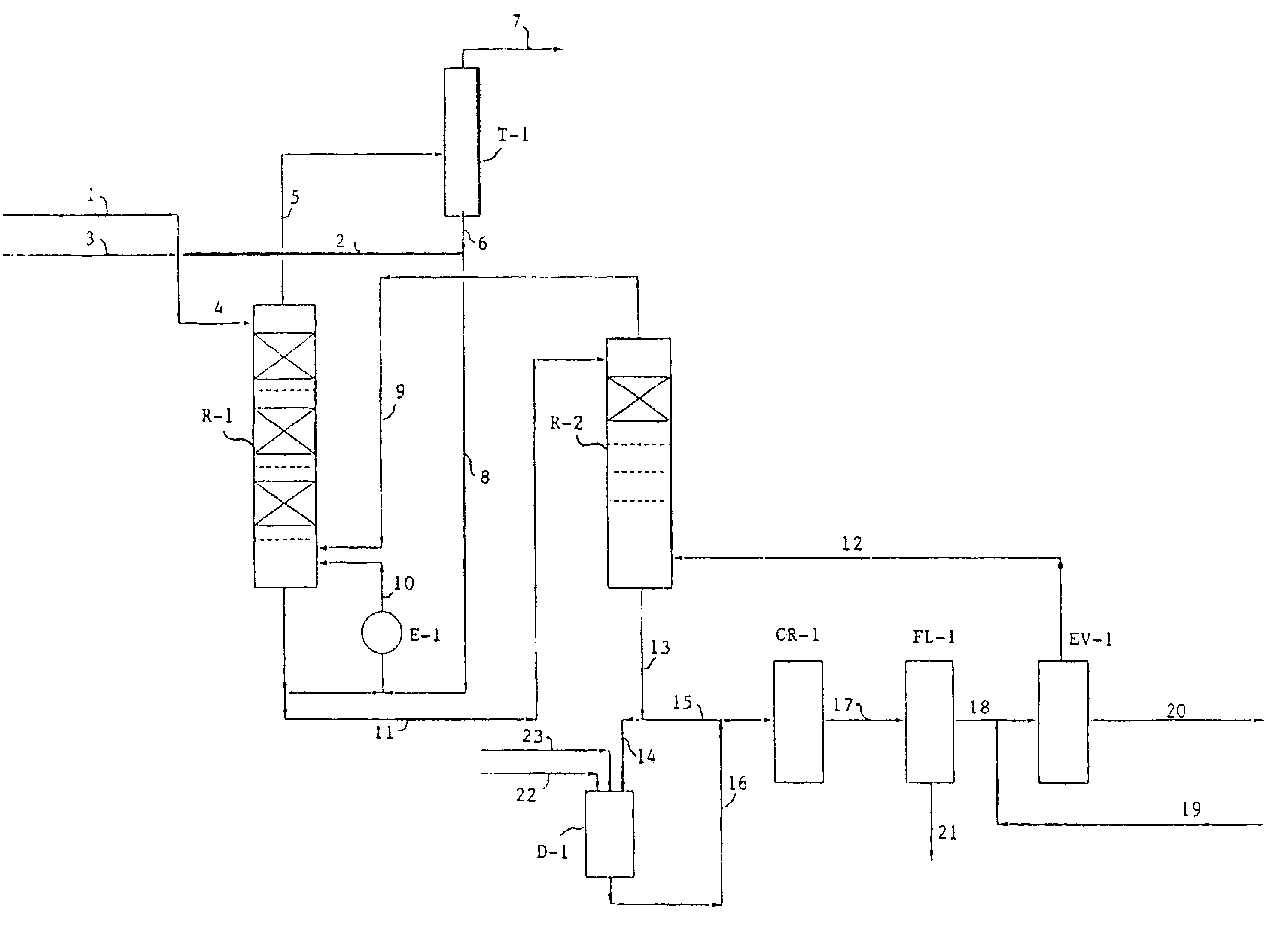Continuous process for converting polytetramethylene ether diester to polytetramethylene ether glycol
- Summary
- Abstract
- Description
- Claims
- Application Information
AI Technical Summary
Benefits of technology
Problems solved by technology
Method used
Image
Examples
example 1
[0053]A 50% by weight solution in methanol of PTMEA with number average molecular weight of 1090 was prepared and fed to a transesterification apparatus similar to that shown in FIG. 1.
[0054]Sodium methylate was added to the solution at a rate of 800 ppm based on PTMEA.
[0055]The temperature of the reaction in each reactor was kept in the range from 65° C. to 70° C.
[0056]A residence time of about 2 hours was provided the first reactor, containing 3 stages of retention and 6 distillation trays. A residence time of about 1 hour was provided in the second reactor containing 2 stages of retention and 4 distillation trays.
[0057]The vapors of methanol and methylacetate leaving overheads the first reactor were processed into an azeotropic column with 30 theoretical trays recovering at bottoms a stream of methanol with about 100 ppm of methylacetate recycled in the process, and separating overheads a stream of methylacetate-methanol azeotrope.[0058]Vapor of fresh methanol (equivalent to the ...
PUM
| Property | Measurement | Unit |
|---|---|---|
| Time | aaaaa | aaaaa |
| Time | aaaaa | aaaaa |
| Time | aaaaa | aaaaa |
Abstract
Description
Claims
Application Information
 Login to View More
Login to View More - R&D
- Intellectual Property
- Life Sciences
- Materials
- Tech Scout
- Unparalleled Data Quality
- Higher Quality Content
- 60% Fewer Hallucinations
Browse by: Latest US Patents, China's latest patents, Technical Efficacy Thesaurus, Application Domain, Technology Topic, Popular Technical Reports.
© 2025 PatSnap. All rights reserved.Legal|Privacy policy|Modern Slavery Act Transparency Statement|Sitemap|About US| Contact US: help@patsnap.com


